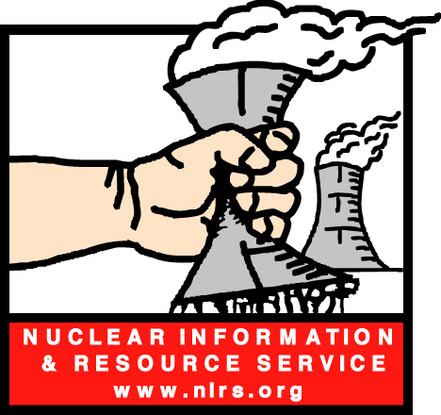
Blog
-
Geiger Readings for December 09, 2014
Ambient office = 85 nanosieverts per hourAmbient outside = 127 nanosieverts per hourSoil exposed to rain water = 85 nanosieverts per hourRed bell pepper from Central Market = 66 nanosieverts per hourTap water = 117 nanosieverts per hourFiltered water = 100 nanosieverts per hour -
Nuclear Weapons 111 – U.S. Department of Defense Indicted a Civilian Naval Engineer for Trying to Sell Schemantic of a Nuclear Aircraft Carrier
I have blogged many times about nuclear weapons but I have never dealt with nuclear espionage. Nuclear devices and vessels are highly complex and difficult to develop. Being able to obtain details of another country’s hard work on nuclear weapons systems gives the other country a head-start in developing their own systems. Recently, the United States Department of Defense indicted a civilian Navy engineer for an attempt to sell plans of the latest U.S. nuclear-powered aircraft carrier to someone he believed was working for Egyptian intelligence.
Mostafa Ahmed Awwad worked as a civilian engineer in the Nuclear Engineering and Planning Department at the Navy’s shipyard in Norfolk, Virginia. He worked in that department since February of 2014. Awwad was born in Saudi Arabia and he married his wife in Cairo, Egypt. He was granted a U.S. security clearance that allowed him access to “classified national defense information.”
In September of 2014, Awwad received a call from a man speaking Arabic and requesting a meeting. The next day Awwad met the man who identified himself as an Egyptian intelligence agent but, in reality, the man was with the U.S. FBI. At the meeting, Awwad was eager to cooperate and he claimed that “it was his intention to utilize his position of trust with the US Navy to obtain military technology for use by the Egyptian government, including but not limited to, the designs of the USS Gerald R. Ford nuclear aircraft carrier.” Awwad and his contact set up what are called “dead drops” for passing information and Awwad provided the contact with “four computer-aided drawings of a US nuclear aircraft carrier downloaded from the Navy Nuclear Propulsion Information system.” He also handed over photographs of blueprints for the ship. Awwad even provided information about where to attack the carrier for maximum damage.
The U.S. relationship with Egypt has been turbulent lately. Following the popular uprising in 2011, Egyptian President Mubarak was thrown into prison and a member of the Muslim Brotherhood, Mohammed Morsi, was elected President. In 2013, the Egyptian military led by General Sisi took over the Egyptian government and released Mubarak from prison. The U.S. considered the actions of Morsi to be a military coup and the U.S. froze some of its military assistance to Egypt.
For the U.S. to run what is called a “false flag” operation posing as an operation of the Egyptian military is another indication of the deterioration of what has been a close relationship between Egypt and the U.S. in military and intelligence affairs. Apparently the U.S. is not concerned about Egyptian anger over the affair. It also appears that the U.S. may be concerned with Egyptian intelligence operations in the U.S.
Imaged from a television documentary about the Egyptian intelligence service:
-
Radiation News Roundup December 08, 2014
TEPCO failed in shutting up retained water at Fukushima even with cement. fukushima-diary.com
Westinghouse Electric Company has rejected as incorrect claims in some media reports that a problem with a nuclear power reactor in Ukraine ten days ago was linked to its nuclear fuel. world-nuclear-news.org
-
Geiger Readings for December 08, 2014
Ambient office = 84 nanosieverts per hourAmbient outside = 130 nanosieverts per hourSoil exposed to rain water = 128 nanosieverts per hourHoney crisp apple from Central Market = 67 nanosieverts per hourTap water = 115 nanosieverts per hourFiltered water = 109 nanosieverts per hour -
Geiger Readings for December 07, 2014
Ambient office = 85 nanosieverts per hourAmbient outside = 87 nanosieverts per hourSoil exposed to rain water = 111 nanosieverts per hourBartlett pear from Central Market = 84 nanosieverts per hourTap water = 114 nanosieverts per hourFiltered water = 102 nanosieverts per hour -
Radiation News Roundup December 06, 2014
Deadly radioactive material up around 50,000,000% at Fukushima plant in recent months. enenews.com
International conference in Vienna gives evidence of the humanitarian impact of nuclear weapons. nuclear-news.net
New Mexico has fined the U.S. Energy Department more than $54 million over accidents at the country’s only underground repository for nuclear waste. nuclear-news.net
6 workers inhaled uranium at Wyoming mine after yellowcake spill. nuclear-news.net
-
Geiger Readings for December 06, 2014
Ambient office = 103 nanosieverts per hourAmbient outside = 74 nanosieverts per hourSoil exposed to rain water = 106 nanosieverts per hourCelery from Central Market = 38 nanosieverts per hourTap water = 106 nanosieverts per hourFiltered water = 85 nanosieverts per hourBlack Cod – Caught in USA = 185 nanosieverts per hour -
Nuclear Reactors 184 – Anti-nuclear Groups Oppose Nuclear Support in EPA Clean Energy Plan
The United States Environmental Protection Agency has been soliciting public comments for its proposed Clean Power Plan which is intended to reduce carbon emissions from power plants generating electricity. The Nuclear Information and Resource Service has been working to send thousands of public comments to the EPA that criticize the Plan.
The NIRS solicited public comments are generally supportive of the EPA Plan but they are concerned about the lack of support of aggressive pursuit of renewable energy sources. The comments were also very critical of the Plan’s support “for aging, uneconomic nuclear reactors already rejected by the marketplace, and which can easily be replaced with cleaner renewables and energy efficiency programs.” The NIRS presented the EPA with a wealth of detailed information about the shortcomings of the Plan and also many suggestions about how to fix the problems. They said that they are now focused on what comes next, viewing the proposed Plan as the start of a process and not the culmination.
The NIRS issued a press release about their reaction to the EPA plan. In the press release, they state that one hundred and forty eight organizations representing millions of Americans are joining together to urge the EPA to ” reconsider and remove its unwarranted support for nuclear power in the plan.” The press release goes on to point out that in their view, nuclear power is counterproductive because of “its excessive cost, its widespread environmental impact not related to climate change and its inhibition of deployment of clean energy technologies.” Even though it has a smaller carbon footprint than fossil fuels, it still has a considerably larger carbon footprint than renewable energy sources. In spite of these facts, the EPA Plan calls extending the lifespan of aging reactors and the construction of new reactors.
The NIRS forwarded over twenty thousand comments from individuals critical of the EPA Plan. Some of the comments focused on the “woefully incomplete and alarmingly inadequate” EPA evaluation of the effect of nuclear waste and nuclear power plants on water resources. Some comments pointed out that the EPA failed to address many other environmental problems including the mining of uranium and the possibility of nuclear accidents.
Comments also highlighted what they referred to as the “dangerous fallacy” that closed nuclear power plants would have to be replaced with fossil fuel power plants. They point out that renewable energy has been growing faster than any other type of new power generation. Replacing all of the old nuclear power reactors with wind power could be accomplished in two years at a cost below the current market price of electricity. The commenters were especially upset by the support for subsidizing the rate paid for nuclear power when these low cost alternatives are available.
The executive director of NIRS flatly stated that nuclear power is not going solve global warming or even substantially reduce carbon emissions from power generation. He said that the biased incentives for the nuclear industry must be removed from the EPA Plan. “Nuclear is too costly and unreliable to solve the climate crisis, and it is simply too dirty and dangerous. Solar, wind and other clean energy solutions have arrived, and every dollar wasted promoting nuclear is a dollar that won’t go to solving the climate crisis.” He called on the EPA to listen to the millions of citizens of the U.S. who are convinced that nuclear power is a bad idea and not worthy of government or public support.





